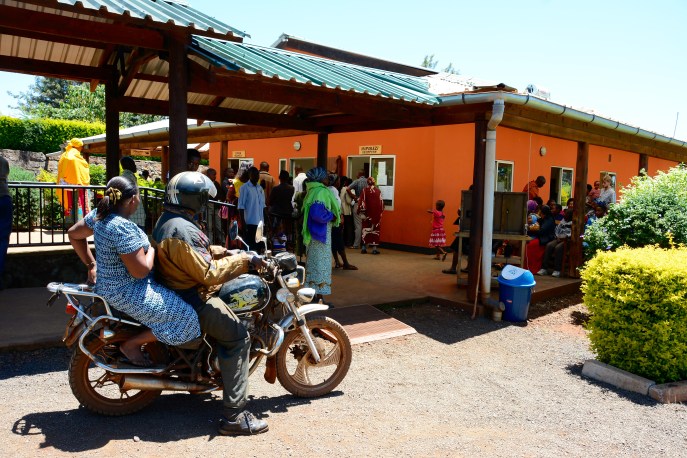I awakened our last morning in Tanzania having needed the rest after our ordeal in Tarangire and having driven back in the dark which is always an experience here. The roads can be treacherous at best and they are often without lines making the driving at night something to avoid if at all possible. Add to that the huge busses that ply the country between cities traveling at what sometimes seems like the speed of light when they are passing you along with the completely opposite huge trucks that travel uphill at a snail’s pace. Not a good combination on the road and add to that everything in between it makes for an exciting time. There are many accidents that occur mostly at night.
Pauline, FAME’s volunteer coordinator, had come with us to Tarangire as she’d never been there before, but she also needed to come to Arusha to go to the immigration office with me so we could have our resident permits stamped into our passports with the original documents she had. We had planned to go early in the morning, but as is often the case, Africa time struck again. Yusuf had insisted upon taking the vehicle to clean that morning and I had asked him to be back in 30 minutes so Pauline and I could leave. Two hours later he finally came back with the Land Cruiser, albeit very clean. Jess was taking a flight on Qatar Airlines that left much earlier and I needed to get her to the airport after the immigration office. She also wanted to make one last trip to the Maasai market.
Pauline and I dropped our passports off at the immigration office and were told to come back at 12:30 to pick them up. It was just out of principle that they couldn’t take care of them for us right away. We took care of the Maasai market and I dropped Jackie and Pauline off at the Blue Heron, a fantastic ex-pat hangout in Arusha that I hadn’t been to before. There was no need for them to take the long and hot, hour long drive each way to the airport. I got Jess there and turned right around and went back to the Blue Heron to pick them up. We were sitting in their wonderful courtyard when I suddenly realized that we hadn’t asked the immigration when they were closing that day and if they had, I’d be in big trouble since they had my passport. We rushed over to find them still open and picked up our freshly stamped passports.
We dropped Pauline off at the bus station where she was catching a “fast Noah” back to Karatu and we were off to meet some friends at the Arusha Coffee Lodge across town to drop something off for them. The traffic in Arusha is become ungodly these days as it is not only the center of business for Northern Tanzania, but is also now the capital of the newly formed East African Community. We made it to the Coffee Lodge in time for our meeting, but traveling back to finish packing took forever it seemed. We made it back to Leonard’s in time for quick showers and packing and were off to pick up Yusuf who was driving us to the airport. I let him drive this time as I had done enough driving in the last two days.
The drive from Arusha to the airport travels along the base of Mt. Meru and through many small villages, each with their own hustle and bustle of activity, people coming and going and doing business. No matter how many times I travel this route, I see something new each time and still marvel that I am in East Africa. I know that I’ll be returning in six months so it has lessened the blow of saying goodbye to everyone and to the country. Tanzania has become my second home and though I will miss it while I’m gone, it will always remain with me and the people there will always occupy a huge part of my heart. Our trip was another success for the patients we saw, the caregivers we worked with and the friends who touched our hearts. Jess and Jackie saw over 280 patients between the two of them, far more than they would ever hope to see had they been working in the US, and the diversity of diagnoses was also remarkable. They are both truly remarkable physicians and the experience they’ve had in Tanzania will only add to their already amazing skills and independence.



























































































